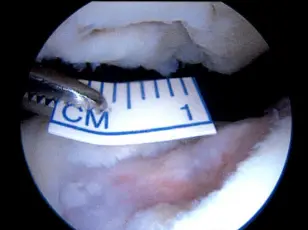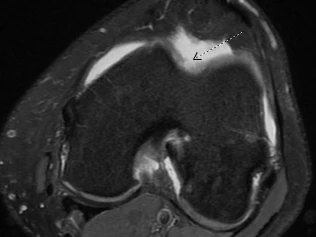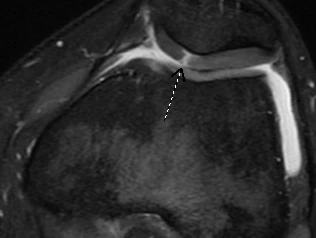Dr. Bryan M. Saltzman, MD

Healthy articular (joint) cartilage cushions our joints and ensures they can bend and straighten fluidly and without pain. What causes cartilage damage and how can you prevent it from happening?
Dr. Bryan Saltzman, MD, dives into cartilage damage in part two of Cartilage 101. Dr. Saltzman specializes in cartilage restoration, adolescent and adults sports medicine, shoulder & elbow and knee.
What Causes Cartilage Damage?
The cartilage in your joints will naturally degrade over time due to age and general wear and tear. Increased repetitive stress on your joints, such as from maintaining a high body weight, and lack of movement can increase your risk of cartilage damage.
Cartilage can also become damaged more abruptly due to a direct injury to the joint. People who practice high-impact sports and exercises are at a higher risk of cartilage damage due to an injury.
What Are the Symptoms of Cartilage Damage?
Cartilage loss and degradation can cause pain, swelling or even “mechanical” symptoms like catching or locking. A focal cartilage injury is cartilage damage isolated to one location, while osteoarthritis is more generalized cartilage damage.

How Does a Physician Identity Cartilage Damage?
Your symptoms (pain, swelling, mechanical symptoms) may indicate to your physician if cartilage damage is to blame. X-rays and advanced imaging, including MRI, can show areas where cartilage has worn away.

 An MRI from the same patient's knee. The arrow points to the area on the patella (kneecap) where healthy, intact cartilage is missing.
An MRI from the same patient's knee. The arrow points to the area on the patella (kneecap) where healthy, intact cartilage is missing.How Can I Protect My Joint Cartilage?
Low-impact, healthy joint movement and exercise help to nourish the cartilage by bringing in nutrients. By keeping your body weight in a healthy range and maintaining good strength and flexibility of the muscles and tendons around the joints, you can reduce “wear and tear” forces on the joint cartilage. These efforts will help the joint cartilage remain healthy for a longer period of time.
Can Joint Cartilage Regrow?
Within our bodies’ natural abilities, cartilage damage is largely irreversible. Because articular, or joint, cartilage is avascular (no blood vessels) and aneural (no nerve endings), it has a very limited capacity to heal, regrow or regenerate.
Dr. Bryan M. Saltzman, MD, is fellowship-trained in Shoulder & Elbow and Sports Medicine. He specializes in cartilage restoration as well as adolescent and adult sports medicine, shoulder & elbow and knee. He practices at OrthoCarolina's Cartilage Restoration Institute, Sports Medicine Center and University office.
Back




Leave a Comment